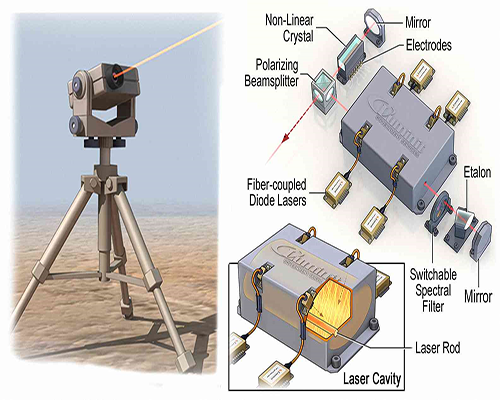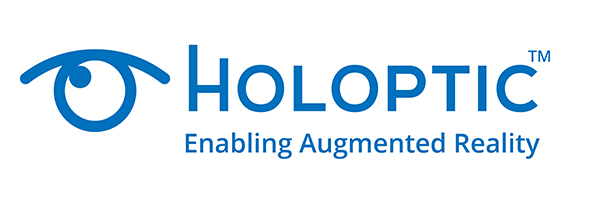Tunable Electro-Optic Laser Scanner (TEOLS)
Holoptic is developing a novel rapidly Tunable Electro-Optic Laser Scanner (TEOLS) device. TEOLS is based on unique liquid crystal microphased array that consists of a continuous array of transparent indium tin oxide electrodes deposited on the microprisms, and a flat glass separator coated with electrode, sandwiched with the fast–switching (in micro-sec range) ferroelectric liquid crystal materials. Under an applied voltage, the parallel–aligned fast–switching analog FLC materials undergoes an electro-optic change, functioning as an electrically tunable liquid crystal microphased array with a linear phase ramp that varies with applied voltage. The phase ramp across the microarrays deflects (and thus scans) light; the angle of deflection depends on the voltage applied. The rapid Electro-Optic (EO) beam scanner deflects short pulses of the illuminating laser beam with ~0.5 mrad deflection angle consecutively to each of 20×20 angular positions constituting the field of regard over 10 mrad of angular range for the NIST 3D Ladar imager. The reflected pulses from the background and targets are collected by the LADAR imager for each tile illuminated by the laser with an image composed of 20 x20 tiles. Target range is determined by measuring time of flight of each laser pulse to the target and back to the receiver.

Spectrally Pure Eye-Safe Laser (SPESL)
To help with the detection of carbon dioxide, methane, and certain gaseous pollutants, NIST is seeking narrow linewidth, tunable and band-selectable, diode-pumped solid-state lasers in the wavelength region between 1550 nm and 1650 nm. These lasers must be fieldable and easy to use, and have pulse energy >1 mJ at repetition rate adjustable up to 20 kHz, with pulse length no greater than tens of nanoseconds. To address this NIST need, LGS, is developing the Spectrally Pure Eye-Safe Laser (SPESL). The SPESL is an Er:YAG laser, side pumped by semiconductor lasers in the erbium absorption band near 1465 nm, with an intracavity etalon and a switchable spectral filter. The etalon will reduce the laser linewidth to <50 MHz because, unlike traditional Q-switched short pulse lasers, the cavity-dumped SPESL circulates the photon flux through the etalon hundreds of times before sending it out. Cavity dumping also ensures constant pulse energy over a wide range of repetition rates, as low as 100 Hz and as high as 20 kHz (previous work indicates 100 kHz is achievable). The simple, automated system design ensures environmental ruggedness and ease of use.

